Millennials, “Generation Disrupted,” Reward Businesses Having Positive Impact


Yet another study has emerged that chronicles the woes of millennials: financially challenged, overburdened by debt, swept up by continuous technological and social disruption. Deloitte’s recently released 2019 Millennial Survey found millennials to be disillusioned with traditional institutions, skeptical of business' motives and pessimistic about economic and social progress. “A generation disrupted,” Deloitte called them.
Last week the Wall Street Journal reported on “Millennials Near Middle Age in Crisis,” focused on American millennials approaching middle age in worse financial shape than every living generation ahead of them, despite a decade of economic growth and falling unemployment.
As the mother of two smart, well-educated and ambitious young millennial daughters, the views captured by these surveys is accurate on some levels but doesn’t tell the whole story.
Yes, financially, millennials lag behind both baby boomers and Generation Z. Many of them entered the workforce during the 2007-09 recession, and have struggled to catch up, putting off marriage, buying a home and having children. As a group, they are better educated than any generation before them, WSJ reports, which is why they face soaring student debt.
But my daughters - and many of their peers - are also among the most socially and environmentally conscious consumers and workers of any generation, as studies have found. Both gained master’s degrees and have chosen career paths reflecting their values and aspirations to contribute to a better world. The older daughter works with a firm specializing in social impact, and the younger is studying environmental policy. Frustrated that their earnings don’t reflect their educational investment? You bet. Cynical about the world and their ability to influence it? Absolutely not.
Values remain intact for millennials
In fact, millennials’ values seem to override financial concerns: most millennials would take a pay cut to work for an environmentally responsible company. And they expect their employers and the companies whose products and services they buy to reflect those same values.
That brings us back to the Deloitte survey, which polled 13,416 millennials (born between January 1983 and December 1994) and 3,009 Gen Z (born between January 1995 and December 2002) across 42 countries. The survey looked at the preferences of these generations, from their consumer tendencies to their business and economic outlook.
The survey found this "generation disrupted" is no less ambitious than previous generations: more than half want to earn high salaries and be wealthy. But despite global economic growth, expansion and opportunity, younger generations are wary about the world and their place in it.
Low opinion of business
That wariness extends to companies. Deloitte found that respondents’ opinions about business continue to diminish, with only 55 percent believing business has a positive impact on society, down from 61 percent in 2018. The decrease was driven, in part, by views that businesses focus solely on their own agendas rather than considering the consequences for society, according to Deloitte.
Business will have to work hard to improve this reputation because millennials are putting their money where their mouths are, as TriplePundit has reported about this so-called “boycott generation”: 42 percent have started or deepened business relationships because they believe companies' products or services are having positive impacts on society or the environment, while 38 percent have ended or lessened relationships with companies perceived to have a negative impact.
Millennials also have evolving definitions of success, Deloitte reported. Traveling and seeing the world topped survey respondents’ list of aspirations (which aligns with the preferences of my own globe-trotting daughters). Over half of respondents aspire to earn a high salary, but it came in last when respondents were asked whether their ambitions were achievable. Around half would also leave their jobs within two years, posing a challenge to employers.
Diversity & inclusion ranks high
If companies want to retain talented millennials, they should make sure their workforce is as diverse as this generation is. Deloitte’s survey found a strong correlation between millennials who plan to stay in their current jobs and those who said their companies deliver best on indicators such as diversity and inclusion. Additionally, a majority of millennials responded that they give a "great deal" or "fair amount" of importance to gender and ethnicity when considering whether to work for an organization.
Millennials see technology continuing to radically change their world. Almost half of respondents believe new technologies will augment their careers, but a similar number think the changing nature of work will make it tougher to find a job. They also expressed that business is most responsible for training workers to meet evolving challenges.
Love-hate relationship with social media
Concerns about the impact of social media are also pervasive among this generation. 71 percent of millennials feel fairly positive or very positive about their personal use of digital devices and social media. However, 64 percent of respondents believe they would be physically healthier if they reduced social media consumption, and 41 percent wish they could stop using it completely.
Wary about data privacy
Cybersecurity worries them, too. 79 percent are concerned they will be victims of online fraud. Similarly, 78 percent are worried about how organizations share personal data with each other. This is eye-opening, Deloitte found, considering that a quarter of millennials have ended consumer relationships because of companies' inability to protect data.
Contrary to the considerable challenges they face, Deloitte found that its respondents remained hopeful and leaned on their values as both consumers and employees. Seizing on that goodwill and scrappiness would be a smart thing for business to recognize.
"From the economic recession a decade ago to the Fourth Industrial Revolution, millennials and Gen Zs have grown up in a unique moment in time impacting connectivity, trust, privacy, social mobility and work," says Michele Parmelee, Deloitte Global Chief Talent Officer. "This uncertainty is reflected in their personal views on business, government, leadership and the need for positive societal change agents. As business leaders, we must continue to embrace the issues resonating most with these two generations, or risk losing out on talent in an increasingly competitive market."
Image credit: Helena Lopes/Unsplash
Hasbro Marks a Year of Old Toys Getting New Lives


When we hear “recyclables" we think of cans or glass. But toys and games? Maybe not, but the partnership Hasbro has with TerraCycle is now a year old.
Editor's Note: This story is part of an editorial series featuring companies on CR Magazine's 20th annual 100 Best Corporate Citizens ranking, which recognizes outstanding environmental, social, and governance (ESG) disclosure and performance among the Russell 1,000 Index. You can follow the series here.
When people hear “recyclables,” they usually think of soda cans, newspapers or glass bottles. But Koosh balls, Mr. Potato Head accessories, Nerf Darts (shown above) or Play-Doh? Definitely not.
Last April, Hasbro set out to change this by launching a recycling initiative – the first of its kind in the $28-billion-a-year U.S. toy industry. Consumers can collect their “well-loved” Hasbro-branded toys and games and mail them to recycling company TerraCycle using the free shipping label provided at sign up. TerraCycle will then break down the playthings into materials to build play spaces, outdoor furniture, flowerpots and more.
The Hasbro toy recycling program “aligns so well with our purpose to make the world a better place for children and families,” said John Frascotti, Hasbro president, during the 2018 launch of the program. “As a company, we know consumers share our commitment to taking care of our planet for future generations, and we see this as an exciting step in our sustainability journey.”
Almost all Hasbro products are accepted for recycling through this program. The only exceptions are batteries, ride-on toys (like tricycles or scooters) and juvenile products (such as high chairs or bouncy seats). But that broken Furby now technically old enough to vote? It can be recycled! Two dozen assorted game pieces, ranging from Cootie legs to Operation tweezers to Monopoly hotels? Those can also be included in your package to TerraCycle. A detailed list of eligible Hasbro products can be found here.
The challenges of toy recycling
Toys have traditionally been difficult to recycle due to the variety of their composition. Municipal recycling programs almost never accept them, leaving consumers out of options if a toy is too broken or worn to donate. Even if toys are still in working order, they may still end up in the landfill. One-quarter of British parents surveyed admitted they’ve thrown away toys “in perfect working order” for one reason or another, according to BBC News.
As previously mentioned, toys can be made of a variety of materials including plastics, metals, electronics and textiles. These materials must be separated before any processing or recycling can occur. Due to the large scale of TerraCycle’s operations, they are able to separate and reuse the raw materials far more easily than a smaller firm focused on a specific material. As a result, 97 percent of waste collected by TerraCycle (across all its programs) is able to be recycled.
Hasbro is among TerraCycle’s many brand partners. A pioneer in the product-recycling industry, TerraCycle currently has recycling programs for everything from Bausch + Lomb contact lenses to Gillette razors to Brita water pitchers and filters.
(Editor’s note: TerraCycle CEO and founder Tom Szaky was recognized by CR Magazine in 2017 as Most Innovative CEO at the Responsible CEO of the Year Awards.)
Steps toward more sustainable design
The toy recycling program is one of many Hasbro initiatives meant to improve sustainability in products and packaging. Other steps forward in recent years include: Achieving 90 percent recycled or sustainably-sourced paper for packaging and in-box content; inclusion of the How2Recycle labeling on North American product packaging; and a recycling and responsible disposal program for toys returned to the Hasbro Customer Care Center.
Image credit: Eric Kilby/Flickr
CVS Quit Cigarettes So Americans Would Too—And It Worked
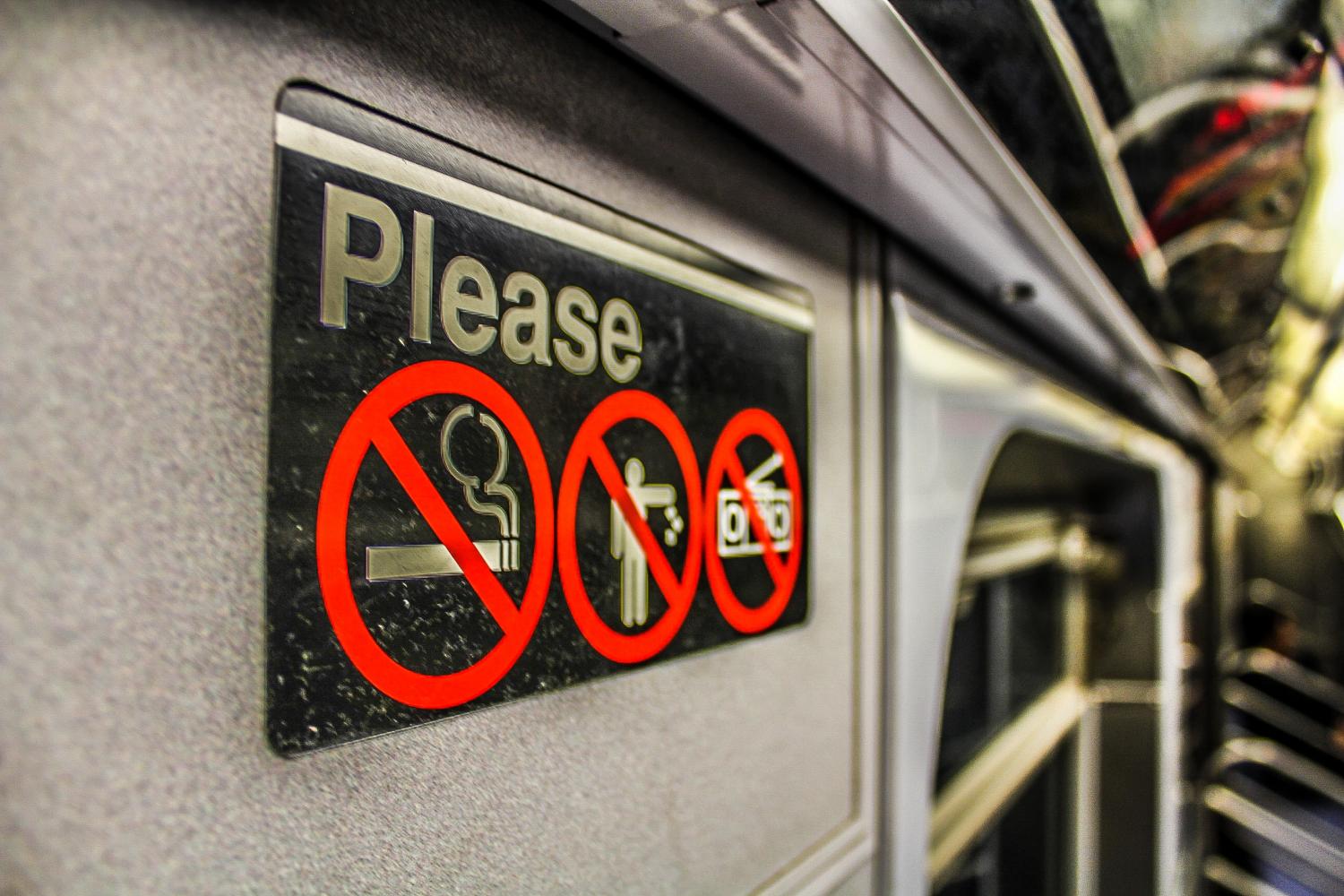
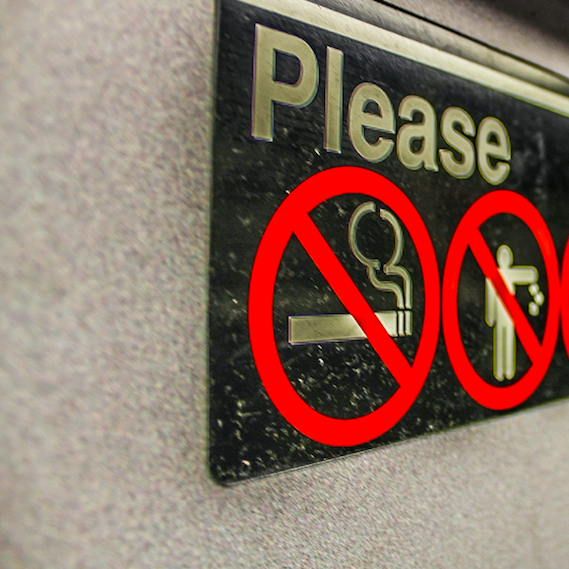
In 2014, CVS pulled tobacco products from its shelves to great fanfare and investors' trepidation. That decision has since paid off in many ways.
Editor's Note: This story is part of an editorial series featuring companies on CR Magazine's 20th annual 100 Best Corporate Citizens ranking, which recognizes outstanding environmental, social, and governance (ESG) disclosure and performance among the Russell 1,000 Index. You can follow the series here.
In September 2014, CVS pulled tobacco products from its shelves to both great fanfare and major trepidation on the part of investors. Looking back at the decision from five years on, it is clear that both reactions were warranted.
The company’s bottom line was affected immediately and severely. Merchandise sales plummeted 8 percent across stores, as well as a further estimated loss of about $2 billion in potential revenue — all from missing out on cigarette sales.
Despite the setback, however, their stock value soared over the next couple of years, rising to more than 140 percent of its value during that September. Investors’ trust, and more importantly, their confidence in the risky move paid off in a big way.
Even more impressive than the financial victory was the tangible effect it had on the U.S. smoking population. In states where CVS had a significant presence, there was a 1 percent drop in cigarette pack sales within a year. While that might not sound like much, it works out to five fewer packs purchased per smoker and a whopping 95 million fewer cigarette packs sold. Meanwhile, other retailers have been playing catch-up.
It’s both fascinating and promising that reducing access to cigarettes caused a measurable decrease in use, rather than just compelling customers to buy them elsewhere. Not only that, but there was a noticeable uptick in nicotine patch sales in the same areas, which indicates the move also inspired people to make an attempt at quitting smoking altogether.
It’s unclear whether this case study has implications for other addictive and easily available substances, but it’s worth looking into. Especially since, as a pharmaceutical retailer, CVS still sells a few of those.
The cessation of cigarette sales wasn’t a one-and-done goodwill effort by CVS. At the same time, the company changed its name from CVS Caremark to CVS Health to represent their new set of ideals and immediately put their money where their mouth is by starting the Be the First initiative.
The goal of the program is to make this generation “be the first” smoke-free generation. To facilitate that goal, CVS earmarked the sizeable sum of $50 million dollars to be spent between 2015 and 2020. For a program with no outside accountability, they’ve done a surprisingly good job staying on target, disbursing $10 million each year in the form of grants, non-profit partnerships, and scholarships.
Be The First has focused its efforts on preventative measures, targeting both primary and secondary schooling with resources and programs designed to convince children and young adults to avoid even the near occasion of smoking. It’s been undeniably successful, too. Even the CDC said that CVS was a significant contributor to reducing the youth smoking rate to 8 percent, an all-time low.
Anti-smoking isn’t CVS’s only angle, and it’s been evident that they’ve ramped up efforts across several facets of corporate social responsibility. It devoted $5.3 million to free health care services through Project Health in 2018 alone, it was ranked highly in a list of diverse and inclusive companies, and they diversified their suppliers to create jobs and economic opportunity.
Importantly, CVS recognizes that personal health is heavily influenced by community health, and that’s why it launched the Building Healthier Communities initiative at the beginning of 2019. This audacious program will be investing $100 million in a five-year timespan comparable to the Be The First initiative.
A driving force in Building Healthier Communities will be the resources and people CVS acquired in their recent merger with Aetna. The program has the following goals:
- Improve local access to affordable quality care by providing low-cost or free health services in underserved and uninsured communities.
- Impact public health challenges such as the opioid crisis and youth smoking by partnering with and funding relevant organizations and programs.
- Partnering with local communities through both volunteering man hours and funding local organizations.
Hopefully the Building Healthier Communities initiative sees success similar to that of Be The First. It has the potential to be an impactful agent for positive change in community healthcare and could serve as a powerful role model for other companies trying to engage and serve their communities.
Image credit: Tim Savage/Pexels
EV Charging at Home Just Got Easier—And More Sustainable


If you want people to use your product or service, you’d better make it convenient, and that’s the thinking behind eMotorWerks’ EV charging at home JuicePlan - the company’s new home electric vehicle (EV) charging-as-a-service offering.
Silicon Valley's eMotorWerks, part of Italy-based Enel Group, has been a market leader in the provision of home EV charging stations. Their level 2 JuiceBox 40 has been a bestseller in the EV charging category on Amazon for the last five years.
However, despite this success, the company identified that one of the pain points of EV ownership is establishing a home charging infrastructure, so they set about devising a turnkey solution to make life easier for potential EV customers.
Prospective EV owners often voice concerns over such things as whether their home is wired to support level 2 fast charging, how to go about securing permitting, not to mention knowing where to go to source someone who can do the installation. In addition, consumers are faced with potentially variable costs beyond just the hardware itself in terms of getting a system up and running.
JuicePlan aims to be a one stop shop to sweep aside all those concerns with its EV charging at home plan. For a flat fee of $19 per month, they will take care of all the details by installing a charging system in a customer’s home hassle-free. On top of this, JuicePlan customers will enjoy ongoing added value, too.
TriplePundit spoke with Preston Roper of Enel to find out more about the service, and what other benefits JuicePlan customers will enjoy.
Roper explained that JuicePlan brings value to customers because of the company’s underlying cloud based platform, JuiceNet, which brings smart-charging services to consumers, while also bringing benefits to utilities.
Working behind the scenes, JuiceNet communicates with a third party database, tracking by the second where energy to the grid is coming from - be it from coal plants or solar installations - while also tracking real-time wholesale energy costs. At the same time, it collects user data, such as when a customer wants to charge their EV. In this way, Roper says, “JuiceNet is the intermediary between energy generation and demand points,” providing a lot of flexibility to both consumers and utilities alike.
JuicePlan customers, Roper explains, are automatically connected to the JuiceNet cloud network allowing them to customize their charging options.
They are able to do this by going into either an app or the online dashboard and checking the boxes for what they want from the system. By opting into what the company calls JuiceNet Green, customers are able to cue the system to charge their vehicle at times when renewable energy sources are online and powering the grid. The system also helps to manage the time of charging when energy costs are lowest, potentially providing - through the platform - a rebate to the customer.
The utilities benefit too, (as well as community choice aggregators who serve local communities with green-power plans) since JuiceNet helps with the question of power demand-management. For example, with thousands of home charging systems connected to a utility, JuiceNet is able to provide data to them so that they can optimize the time of charging. Load-Shifting, the opportunity to move the time of energy consumption - such as charging an EV - even by a few minutes allows utilities to smooth energy demand throughout the day and allow them to save money, while also optimizing the use of renewables.
Another potential stakeholder group of eMotorWerks’ products are automakers who can leverage the platform for their customers too. eMotorWerks currently has a project with Honda, where the JuiceNet system communicates with Honda’s cloud network, such that customers of Honda’s electric vehicles can benefit from the smart charging tools their system offers.
Roper thinks the ongoing adoption of EVs is inevitable, believing that ultimately electric cars are a superior product to gasoline-powered vehicles especially considering range and battery costs are always improving.
He believes full vehicle-to-grid connectivity, however, where power can be both sent to vehicles from the grid and back again, is still quite some way off in the future - though their system can support that too. Still, the benefits to both consumers and utilities eMotorWerks can offer via JuicePlan in helping to “level-ize the load,” as he puts it, brings many of the same benefits today.
As far as an EV charging at home service offering, Roper believes JuicePlan is unique in terms of providing a turnkey solution from installing the hardware through to providing smart charging services for a flat monthly fee. JuicePlan will initially be available to electric vehicle owners across several markets in California, New York, New Jersey and Maryland.
Image credit: eMotorWerks
Plogging: The Hot (and Environmentally-Friendly) Fitness Trend
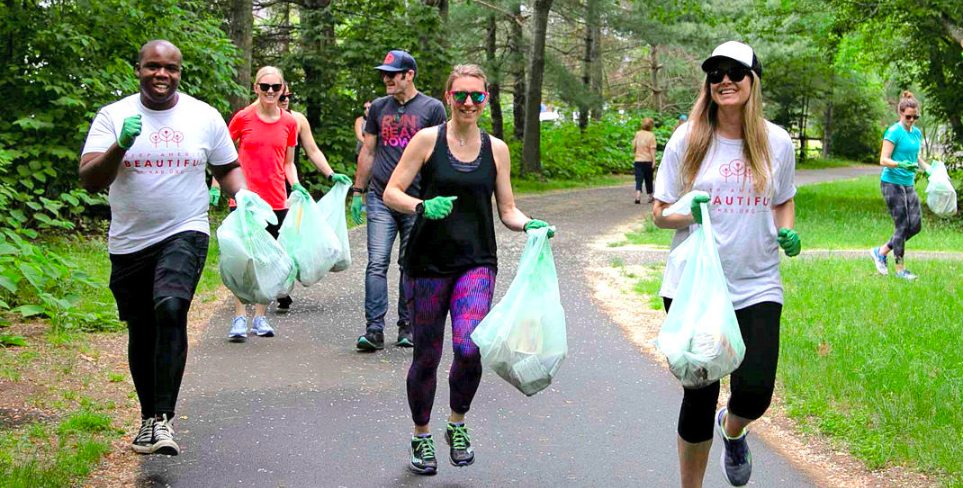
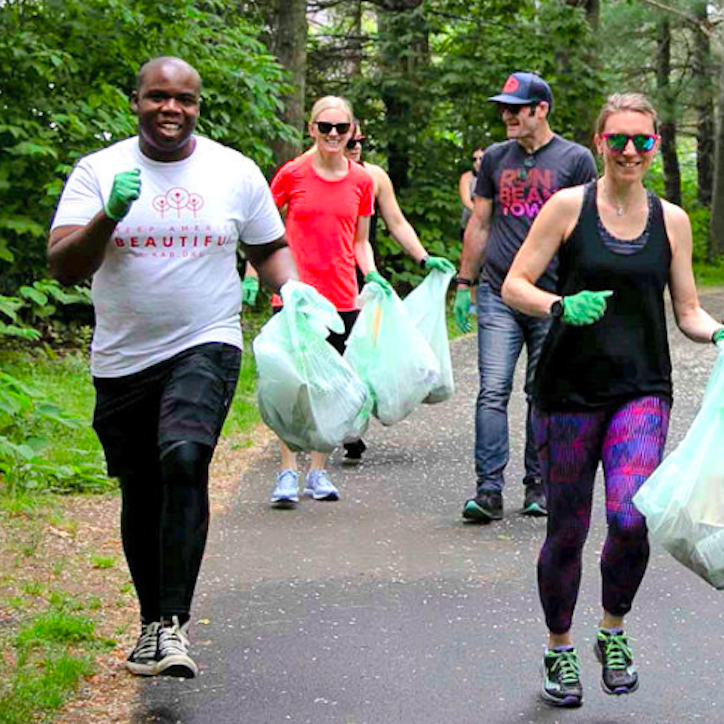
Seeking a new way to inspire your employees and clean up the local environment? Consider “plogging.”
Picture this: you’re running beside the river, music pumping, sunlight coming down and there’s a slight breeze. Everything is beautiful, the grass is green and flowers blooming, but then you see all the empty soda bottles, the gum wrappers, and tiny bits of Styrofoam littering the ground. This is not a rare sight. Plastic waste affects communities around the world as it piles up and damages ecosystems. In today’s times of microplastics and ever-increasing trash, it can be difficult to see how individuals or communities can contribute to the larger good and make a difference. But one way has been “plogging,” which has gained notoriety on social media platforms, including Instagram, to promote how a person can do their part to clean up their communities.
You may have plogged before without even knowing it; or you’re about to start now.
“Plogging,” a term that combines the Swedish phrase plocka upp (to “pick up”) and “jogging,” was coined by the Swedish in 2016 and has only recently scored more attention in the U.S. So how can you get started?
All you need is a jogging outfit (running shoes and comfortable athletic clothes) and a trash bag (maybe some gloves too!). It is a cost-efficient way to propel environmental activism and this is something that you can do today. Plogging focuses on picking up garbage that you see on a run, thus incorporating squats into your workout and environmental benefits.
Plogging also has physical benefits, since it adds variation to a run and actually burns more calories. As noted in the Washington Post, “the Swedish-based fitness app Lifesum, which earlier this month made it possible for users to track plogging activity, a half-hour of jogging plus picking up trash will burn 288 calories for the average person, compared with the 235 burned by jogging alone.” Plogging can help bring a new routine to a daily workout and gives runners (especially novices) the opportunity to take breaks while running.
The environmental nonprofit Keep America Beautiful has recognized the growing trend of plogging and its affiliates have hosted plogging events, during which volunteers plog and pick up pounds of garbage. As Mike Rosen, Senior Vice President of Marketing and Communications at Keep America Beautiful wrote in a blog last year:
“Litter impacts our quality of life and economic development, and often ends up as marine debris, polluting our waterways and oceans and harming wildlife and the environment. Plogging is brilliant because it is simple and fun, while empowering everyone to help create cleaner, greener and more beautiful communities.”
Keep America Beautiful offers on its website some suggestions for how you can start plogging:
- Plogging routes - Choose a route heavily littered, but also safe.
- Materials – Be prepared and make sure you are equipped with gloves, bags, water, and a litter picker, if desired.
- Safety – Your plogging route most likely will require crossing streets. Always look both ways when crossing and wear gloves when picking up litter. Stay away from picking up sharp objects.
- Disposable – When your plog is finished, properly dispose of products in the correct recycling or trash bins.
- Show off – Show off the hard work you have done and post about it! The organization recommends using the #KABPlogging hashtag, as well as following it on Instagram to be connected to the plogging community and stay informed. The #plogging hashtag across Twitter and Instagram can also help you stay posted about what’s going on in the world of plogging.
Plogging is not only an individual activity, but can actually be implemented into company practices, as part of a volunteer initiative or a partnership with a local affiliate. Plogging can help build a community of people, both local and online, who are interested in working together to make a difference. It only costs the price of some trash bags, gloves, and your spare time.
It’s a hands-on experience that creates change in places that you frequent -- such as near work or around the community in general, allowing for like-minded individuals to meet and work together to clean up the area.
Plogging connects to people on a larger scale because of its trendiness on Instagram. Through promoting plogging, this tactic could engage younger audiences on Instagram who care about sustainability and environmental preservation, as well as healthy living. This can promote a positive company image online.
More journalists, including Allison Klein of the Post, have covered how Keep America Beautiful continues to showcase plogging as a way to encourage trash-free communities. Keep America Beautiful’s Rosen told Klein when the nonprofit distributed its #plogging message to its approximate 600 affiliates, the answers they heard were astonishing. “People started saying ‘we do things like this already,’” Rosen said in the Post interview. “In Tennessee they do an event called ‘Trashercize’ that combines exercising with cleaning up community.”
Lizzie Carr, an environmentalist who helped set up Plastic Patrol, a nationwide campaign to rid our inland waterways of plastic pollution, stated that "anything that's getting people out in nature and connecting positively with their environment is a good thing," in an interview with the Telegraph. "There's been a real shift in the public mindset around plastics, helped by things like Blue Planet highlighting how catastrophic the crisis is," she says. "We need to keep momentum high and the pressure up and empower people through initiatives like plogging and Plastic Patrol."
Plogging has also caught the eye of environmentally-friendly companies. Fjällräven, the Swedish outdoor apparel and equipment company, has recently started to hold plogging events in the U.S. In addition, the soy beverage brand Silk has also promoted plogging, encouraging citizens to share and promote their plogging experiences on social media. In fact, Silk created a petition to add plogging to the 2028 Olympics. Nancy Fishgold, senior manager for external communications for Danone North America, which owns Silk, stated that “adding plogging as an official Olympic event would be a meaningful step toward making the world a better place,” as reported by Melissa Locker on Fast Company.
While trash pick-up days are not a new concept, plogging can encourage a healthy lifestyle while decreasing the amount of litter in our public spaces. And we will have to wait and see if it could be the newest addition to a more sustainable Olympics!
Image credits: Keep America Beautiful; Fjällräven San Francisco/Facebook
Oakland A’s Reinventing What Stadiums Mean for Communities


The Oakland A's want to build a new ballpark that will be integrated into the local community - not the typical project usually imposed on a neighborhood.
There is no end to studies that have concluded that building expensive stadiums for football or baseball teams are almost always a bad investment for cities. For the past two decades, we’ve seen the story play out time and time again: a franchise decides its stadium is outdated, the team’s owners threaten to move, civic leaders panic and then, the stadium is finally built. But while teams profit, cities often go into further debt, while local infrastructure and schools suffer.
We don’t hear much about this discussion because for the most part, all the stadiums have been built. But among the few baseball teams seeking another home, the Oakland A’s stand out for not just designing and building a new stadium, but one that will be integrated with the local community.
For a half century, the A’s have played at the Oakland Coliseum on Hegenberger Road and I-680 in the Fruitvale section of East Oakland. Many fans cherish this site for its four MLB championships and the scene of the Oscar-nominated Moneyball. Other fans, and many critics, remember the stadium, or "Mausoleum," for its perceived obsolescence and sewage backups.
The A’s say they want to turn the Coliseum site into a park surrounded by a mixed-use development that will include affordable housing.
And the team wants to move six miles northwest to what is now Howard Terminal in the port of Oakland. Plans call for a baseball-only stadium that could seat up to 34,000 fans. As with the case of the future Coliseum site, the stadium, projected to open in 2023, also promises to be surrounded with a mixed-use development with affordable housing, offices and public spaces.
The jewel of this development is an elevated park, designed to look like a futuristic green roof, which will wrap around the stadium. The A’s promise that this park will be open to the public, both on game days and during the off-season.
Critics say plunking a stadium in the middle of one of the busiest maritime ports in the country is a poorly conceived idea. The A’s have responded with a plan for a gondola that will ferry fans from nearby Jack London Square, which the team says would offer a safe, low-emissions form of transport while preventing any interference with the cargo ships in the bay or trains on land. Gondolas, however, have hardly caught on in the U.S. as public transport options outside of ski resorts. (The team and civic leaders in Oakland, however, could take inspiration from countries like Colombia that have included them in their public transportation infrastructure.)
The A’s also insist that this massive project will be entirely privately funded. In other words, there will be no burden on local taxpayers. Whether this is entirely true is open to debate; the city could be on the hook for neighborhood infrastructure improvements.
More local leaders are buying into this project, as Oakland is losing two of its major professional sports teams – the NFL’s Raiders are moving to Las Vegas next year, and the NBA’s Golden State Warriors will have new digs next season at a sparkling arena across the bay in San Francisco.
But not all stakeholders are thrilled at the prospect of the Oakland A's moving across town. Some residents of West Oakland see the new stadium project as another step in gentrification that will price low-income residents out of the neighborhood. Port workers see the stadium as a threat that would interfere with a working port while eliminating good-paying unionized jobs.
Nevertheless, the ideas the Oakland A’s have for this proposed new stadium stand out as this is a project meant to be part of a community - rather than the typical stadium project imposed on a neighborhood. Far too many stadiums were built with pledges of new tax revenues and jobs, only to find that the results didn’t match the promises. Sporting events also have a history of not creating a financial windfall, but instead a financial drain as local residents would rather stay home – or a new facility simply moves the money spent in one neighborhood to another.
But if the A’s can deliver on their commitment to affordable housing, and stay true to the team’s pledge that the Howard Terminal stadium will be a living part of the community instead of a massive empty shell most of the year, this ballpark could turn heads and redefine how sports teams build future stadiums in the 21st century.
Image credit: Oakland Athletics
Habitat Restoration Is (Y)our Responsibility
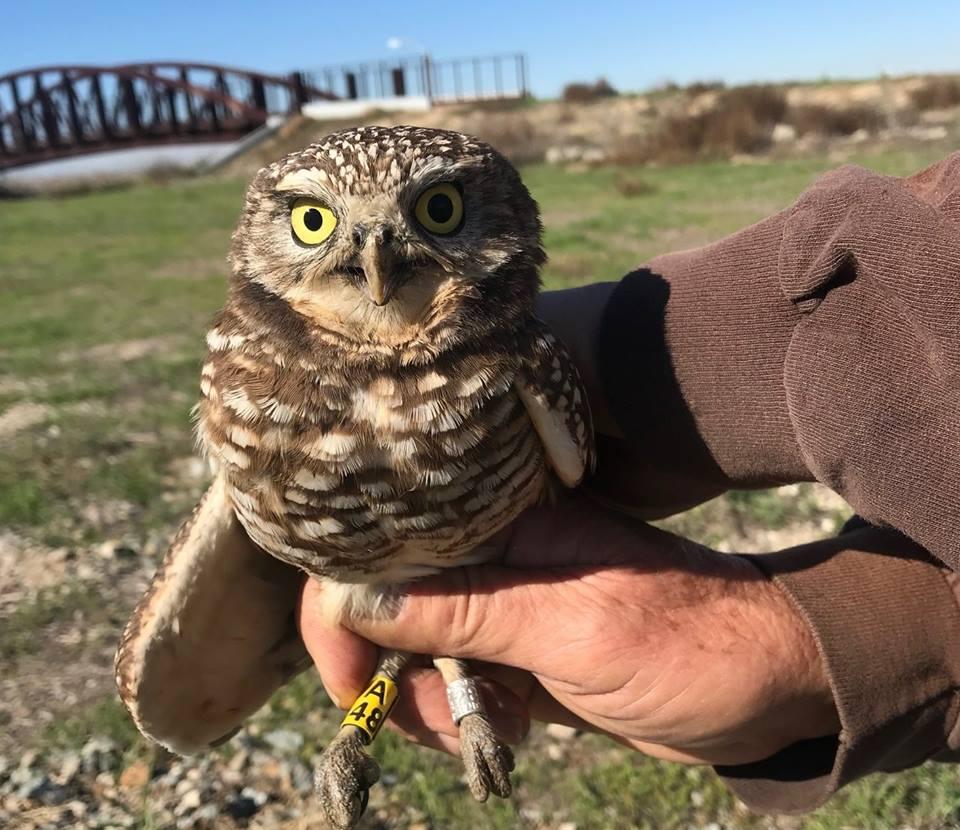
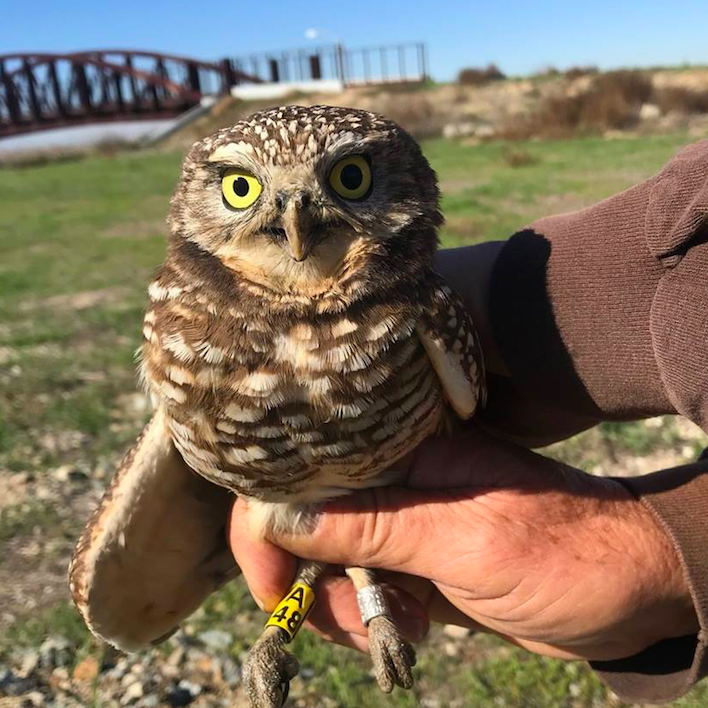
It’s not you, it’s us.
Save the whales. The polar bears. The honey bees. You or your company undoubtedly encountered one or all of these conservation campaigns over the course of your lifetime. You’ll probably encounter many more as our earth’s wildlife continues to hurdle towards mass extinction at an alarming rate. Approximately 1/8th of our planet’s plant and animal species are currently at risk. What may seem like a small fraction on its own actually works out to around one million endangered or vulnerable species when extrapolated. That’s no small figure.
Something must be done! That’s what you're supposed to say after reading a statistic like the one above. Did it spur you to action, or did it merely evoke a feeling of slight disappointment? Perhaps you, like many others, believe that something is already being done. If so, you’re right. Something is already being done — but it’s not enough. Current conservation efforts are no match for the rapid rate of habitat deterioration plaguing our ecosystems. Only partnerships with community-based conservation are capable of inciting the necessary amount of change in the recommended amount of time.
What’s wrong with current conservation efforts?
Governing bodies have done a great job drafting and implementing legislation designed to preserve critical habitats and endangered species. There are at least seven major conservation laws regulating the U.S. alone. Process typically slows progress, however, and there is plenty of red tape between written legislation and actual restoration. Even with policies in place, sometimes we’re too late. Add to that the fact that regulations are only as effective as the individuals that know and follow them, and it’s easy to see how our efforts are minimal in the grand scheme of things.
There are five major obstacles impeding the progress of most major conservation efforts today. They are as follows:
-
Lack of enforcement,
-
Unclear goals,
-
Underfunding,
-
Generalized strategy, and
-
Community exclusion, ignorance, or apathy
While each of these obstacles is significant in its own right, community exclusion is the only one with the potential to minimize the impact of the others when corrected. Including communities in current restoration practices and involving them in future ones instills a certain sense of responsibility and accountability, both of which are crucial to effective habit restoration strategies.
How can community-based restoration help?
Community-based restoration is, essentially, a sustainable conservation program. Rather than relying on present-day law and public opinion to assign importance, it incorporates the value of conservation efforts into the backbone of a community. When executed correctly, habitat restoration becomes a critical consideration of the legal, academic and economic infrastructures in a given location. Let’s take a look at what community involvement in each of these areas might look like.
Legal
Federal legislation can only do so much when it comes to environmental conservation and restoration. Overarching policies provide a nice framework, yes, but they fail to consider the nuances and public sentiment of a given location. When legislation becomes local, however, communities are able to provide critical insight that may otherwise be overlooked. Local citizens tend to know more about which area practices might be hindering progress, who is involved in those practices, and which alternatives might provide a viable solution.
Furthermore, individuals are far more likely to be aware of the rules policing their own community. It’s difficult for a federal agency to enforce national acts at the municipal level, so it’s of the utmost importance that communities make local enforcement a priority. Some habitats require public assistance in order to be considered fully restored, while others must be left alone entirely. Regulations drafted and enforced at the grass-roots level ensures that each diverse habitat in the community receives the proper level of care.
Academic
One of the most important factors influencing the success of a community-based restoration program is academic involvement. Numerous colleges offer ecology and conservation programs as a part of their curriculum, including the University of California Irvine where I teach courses essential to their Master’s in Conservation and Restoration Science program, but the important information is limited to the number of students signed up to take those courses. To speed up habitat restoration, it is essential that conservation education moves beyond the walls of higher education and into the syllabi of primary and secondary schools.
Youth are the future stewards of Earth, so it’s only logical that they understand the current state of their environment as well as the impact of their actions upon it. When educators emphasize the importance of community ecology at an early age, habitat restoration becomes less of a burden and more of an ingrained attitude.
Economic
Money is often cited as a chief impediment of habitat restoration efforts. Lack of funds translates to lack of action in most cases, but it doesn’t have to. Changing the financial mindset of a community can actually help stimulate conservation economy. Say, for example, that an environment focuses on providing attractive wages and incentives for conservation-related positions within their borders. Not only are they encouraging ecologically responsible citizens to become a part of their population, but they are putting money into the hands of the individuals that are most likely to do good with it.
Urging local institutions to clearly outline conservation career paths at the educational and professional levels serves a similar purpose. The educational programs attract eco-smart students to the community and the professional pathways offer opportunities for them to stay. The more a community invests in habitat restoration personnel and advocates, the more citizens they acquire that are willing to invest in the community in return.
Habitat restoration is not a fast process, nor will it ever be. We are capable of destroying in minutes what it took nature eons to create. If we’re going to succeed in reversing the damage, if we’re going to truly make a difference, we must move restoration out of the hands of individuals and into the hearts of communities.
Image credit: City of Costa Mesa/Facebook
Delta Does (and Does Not) Ditch Plastic; Why It’s All Good


Editor's Note: This story is part of an editorial series featuring companies on CR Magazine's 20th annual 100 Best Corporate Citizens ranking, which recognizes outstanding environmental, social, and governance (ESG) disclosure and performance among the Russell 1,000 Index. You can follow the series here.
As the urgency of climate action comes into sharper focus, airlines have found themselves on the front lines of the battle over carbon emissions. They have also become a bellwether for innovative solutions. With that in mind, let’s take a look at some of Delta Air Lines’ recent projects that touch upon both environmental and social sustainability.
1. Say goodbye to small plastic items
The movement to ban plastic straws has gathered strength in recent months, and Delta has been among the early adopters.
Delta drew attention with its plastic straw ban last October. The ban was part of broader, ongoing initiative to remove single-use plastics - including beverage stirrers, wrappers, and cutlery as well as straws - from aircraft. The company’s Delta Sky Clubs are also included in the ban.
For some perspective on the cumulative impact, consider that Delta had previously banned plastic wrap from cutlery in its international Main Cabin. With that ban alone, Delta anticipated saving more than 300,000 pounds of plastic yearly.
2. Small plastic items are just the tip of the sustainability iceberg
Like a growing number of other companies, Delta is also addressing the plastic waste problem on a larger scale.
Last November, Delta announced that its Monroe Energy jet fuel refinery in Pennsylvania will begin receiving oil produced from waste plastic. The new initiative partners Delta with the Oregon-based company Agilyx, which plans on providing the refinery with about 2,500 barrels per day of the plastic-to-oil feedstock by 2020.
Agilyx caught the media spotlight in 2011, when Total and Waste Management invested in the company’s modular waste conversion system. According to Agilyx, each module can convert one ton of plastic waste into as much as 240 gallons of synthetic crude oil, depending on the type of plastic in the mix.
The new agreement also pairs Delta with the global environmental innovator Sir Richard Branson, who counts Agilyx among his investments.
3. Paying attention to details
While Delta’s plastic initiatives operate on a massive scale with attention-grabbing numbers, the company is also involved in projects that are small in scale, but that also have a high impact on the Earth’s ability to sustain life as we know it.
One of those is the company’s honeybee preservation partnership with the startup Bee Downtown.
In April 2018, Delta received three beehives from Bee Downtown, which works with companies to provide beehives at their facilities.
The so-named “Honey Hangar,” located at Delta’s offices in Atlanta, provides more than honey. It also provides Bee Downtown and other bee-watchers with important information on the health of the local pollinator habitat, and its ability to sustain colonies of honey bees.
And, the beehives connect Delta with a fundamental matter of sustainability in the food supply. The company cites Bee Downtown Bee founder and CEO Leigh-Kathryn Bonner, who explains: “Every third bite of food we eat is thanks to a honey bee. They're the backbone of our agricultural system. Bee Downtown fights the devastation of these important natural workers by installing and maintaining company-sponsored hives in urban areas, where bees thrive due to diverse food sources and stable living conditions.”
4. Enlisting the power of youth
Delta’s latest sustainability report quantifies the impact of many more programs, but perhaps the most significant initiative undertaken by the company is one that is not so easily quantified.
When Delta announced its plastic straw ban last fall, it also launched a new Youth Advisory Council to support the initiative along with other environmental actions.
Delta lined up some savvy activists in support of the Advisory Council. The initial members — Carter and Olivia Ries of One More Generation, and Shelby O’Neil of Jr Ocean Guardians — already had experience in organizing sustainability activities at Delta and elsewhere.
Delta’s initial plans for the Youth Council also included Emma Kavanaugh of the Surfrider Youth Club. The aim is to recruit additional members representing diverse communities and interests, through a partnership with the Captain Planet Foundation.
As described by Delta, the youth group will connect with the existing GreenUp employee group to brainstorm on improving and expanding the company’s environmental activity.
The Advisory Council is just getting under way, so its impact remains to be seen. However, considering the ability of young activists to galvanize movements like gun control as well as climate action, it’s a good guess that the new group will kick off a fresh burst of environmental activity at Delta.
5. What’s next for Delta
In addition, Delta is already primed for activist culture through its other corporate social responsibility initiatives.
One example is Delta’s support for HIV/AIDS action. Earlier this month, Delta company took up the role of presenting sponsor at the high profile AIDS Walk New York in New York City. The annual event is a project of the organization Gay Men’s Health Crisis, which advocates for the rights of people with HIV/AIDS as well as supporting research leading to more effective treatments and a cure.
Another clue to the future influence of the Youth Advisory Council lies in Delta’s long-term relationship with Habitat for Humanity.
Over the past 10 years Delta has constructed 264 homes globally with Habitat, and 12 of them were built with the proceeds from Delta’s aluminum, oil, and scrap metal recycling programs.
That connection echoes the United Nations 2015 Sustainable Development Goals (SDGs), which promote a holistic approach to progress.
The SDGs were designed to measure and track progress by nations, and forward-looking companies are also beginning to use them as a companion to their social responsibility reporting.
As the Youth Council finds its footing, look for more programs from Delta that echo the interconnected concerns of youth activists, linking environmental goals with progress on social justice and human rights.
Image credit: Delta Air Lines/Flickr
Why EAT Is Looking Tasty to Pret A Manger
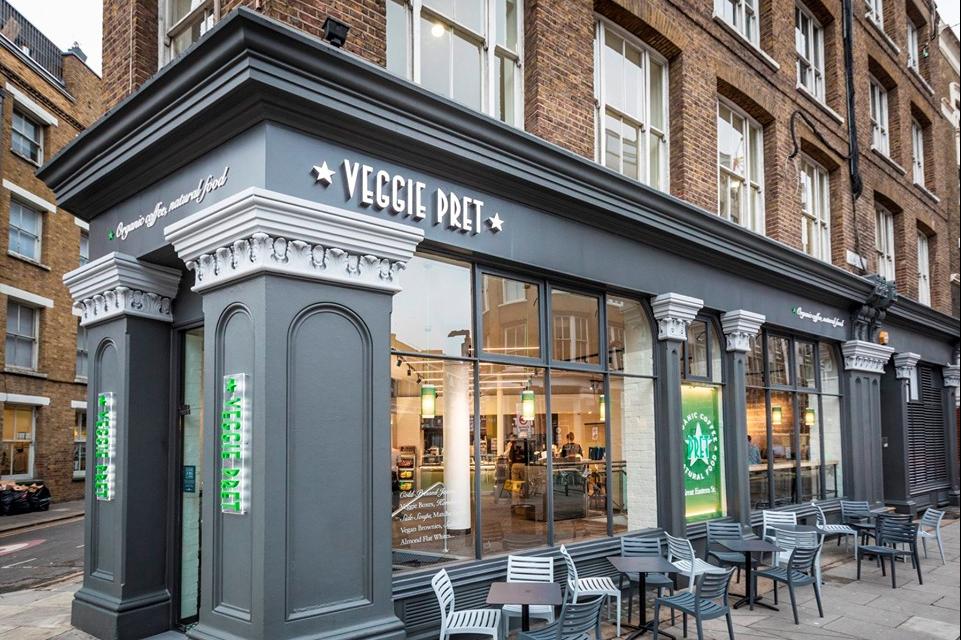

Pret A Manger, a U.K.-based sandwich shop chain, acquired EAT as vegetarian and vegan restaurants continue to rise in popularity on both sides of the pond.
Pret A Manger, the United Kingdom-based sandwich shop chain, earlier this week acquired its competitor EAT. This move will facilitate the expansion of Pret’s vegetarian locations, branded as Veggie Prets. At a time when many restaurant chains in London are struggling amid economic uncertainty from Brexit, vegetarian offerings may help food companies draw in different customers. We explore the drivers of Pret’s expansion into vegetarianism and the predicted effects of this acquisition on eateries across the U.K.
The unexpected success of Veggie Prets
Pret A Manger started experimenting with Veggie Pret popups in 2016. The company initially expected the idea to be short-lived and to generate a loss, but the success of the first location led the company to continue transitioning additional locations into Veggie Prets. There are now three locations in London and one in Manchester, with plans to expand vegetarian offerings at Prets in the U.S. and Hong Kong.
The plant-based dining trend is promising for restaurants looking to increase profits with a wider customer base. Beyond Meat, the California startup that offers meat alternatives, had what most industry analysts describe as a successful initial public offering. Shares have increased 219 percent over their initial $25 offering price. The company’s valuation is over 22 times Wall Street’s predicted sales for 2019, a figure that reflects the potential for meat alternatives to gain traction within the global protein market. Vegetarianism is now mainstream, and companies that cater to changing consumer tastes should find success in the long term. Pret A Manger’s expansion of Veggie Prets comes at the perfect time for the company to establish a lead in this growing market.
A deal benefitting both parties
This deal benefits both Pret and EAT. Acquiring EAT increases Pret’s market share in an industry that is saturated by other quick eateries and delivery apps like Deliveroo. Additionally, using EAT’s established locations to continue expanding Veggie Prets would give Pret a lead in the fast-growing vegan movement in the U.K. In 2016 there were an estimated 540,000 vegans in the U.K. — ten years ago there were only 150,000.
This deal simultaneously benefits EAT’s owners by relieving a struggling business off their hands. EAT has been for sale since February, when its private equity owner Horizon Capital appointed a corporate advisory firm to offload the business. EAT was in financial trouble; declining sales at its locations led to a reported $21.8 million loss last year. According to the Financial Times, the price tag for EAT was around $76 million. This tactic of acquiring a smaller competitor was considerably less costly to Pret than undertaking organic growth with building out locations on its own.
With Pret A Manger on the move to become a dominant competitor in vegetarian quick eateries, it can be expected that more chains will follow. Consumers following a plant-based diet now have a variety of food choices, whereas several years ago their options were slim for eating out. Restaurants that haven’t already joined the wave may soon be faced with the dilemma of if you can’t beat ‘em, join ‘em.
Image credits: Pret A Manger/Facebook
#CiscoChat Live: Making an Impact on Homelessness


You're invited to #CiscoChat Live, Thursday, May 30th, 10am PT, to hear from Cisco, Destination: Home, and PATH to view how they are taking on homelessness.
The homelessness challenge may seem enormous, but it is solvable.
The first step is to choose to see it. Homelessness is an outcome of severe and growing economic inequality, with factors such as slow wage growth, downsizing of some industries, or skyrocketing rents—anyone can be at risk of becoming homeless.
On any given night, 552,830 people in the United States experience homelessness. California has the largest number of people experiencing homelessness, and in San Diego County, nearly 9000 are experiencing homelessness.
Organizations like Destination: Home and PATH—with the support of companies like Cisco and local communities—are making an impact across the state. And at Cisco Live US 2019, attendees will have the opportunity to make conquering homelessness possible.
#CiscoChat Live: Making an Impact on Homelessness
Before Cisco Live US kicks off on June 9th, we invite you to join our #CiscoChat Live on Thursday, May 30th at 10 am PT to hear directly from Cisco, Destination: Home, and PATH. They’ll share how we can conquer homelessness, together, and how you can get involved at Cisco Live or in your own backyard.
We’re excited for the roundtable discussion, which will be moderated by Cisco’s own Stephanie Chan! She’ll be joined by:
- Chad Bojorquez, Senior Director, Destination: Home
- Joel Roberts, CEO, PATH
- Erin Connor, Critical Human Needs Portfolio Manager, Cisco Corporate Affairs and Cisco Foundation
You’ll learn firsthand about the problem of homelessness, the solutions being pioneered by these organizations, and how we can all get involved to make a positive impact.
We’ll be taking your questions live at the end of the show. Use the #CiscoChat hashtag on Twitter, or post your question in the comments section if you’re watching on Facebook or YouTube via Cisco’s home page. We look forward to next week’s discussion, and hope you’ll join us!
See how we’re making a positive impact on the world, and how we plan to benefit people in the local San Diego community at this year’s Cisco Live US.
Previously published on the Cisco CSR Blog and 3BL Media newsroom.
Image credit: Alvin Decena/Pexels